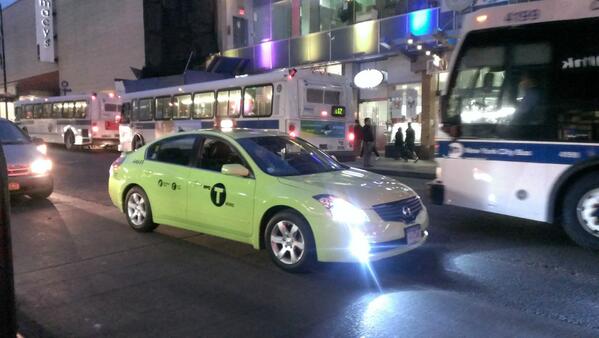PHOTO: A public hearing on a proposed rule that reflects the TLC’s findings from a review of the science and best practices of professional driver fatigue is scheduled for June 23. Courtesy of TLC
By Forum Staff
The administration this week announced the culmination of an extensive Taxi and Limousine Commission review of the science and best practices of professional driver fatigue.
A public hearing on a proposed rule that reflects the TLC’s findings is scheduled for June 23, according to Mayor Bill de Blasio and TLC Commissioner Meera Joshi, who made the announcement on Tuesday.
An existing TLC rule addresses driver fatigue by limiting to 12 the number of consecutive hours that a taxi driver can drive for-hire. While it is unclear why, that restriction does not currently apply to for-hire vehicle drivers. It has also been historically difficult to enforce because a break of any length could reset the clock and allow a driver to comply with TLC rules while still working excessive hours.
TLC said it reviewed the research on fatigued driving with the goal of developing new rules that would apply to its driver licensees across all of the various industry segments it regulates.
Among the lessons learned in the review, the agency noted, is the research conducted by organizations including the U.S. Centers for Disease Control and Prevention, the National Highway Traffic Safety Administration, the National Sleep Foundation, and the Federal Highway Administration, among others, that concludes long work hours lead to acute fatigue and reduced sleep. Over a period of days and weeks, the research shows, these long hours may lead to cumulative fatigue. For professional drivers, TLC reported, this means slowed reaction times and a reduced ability to assess situations quickly, potentially leading to driver errors and a higher risk of crashing. In addition to longer working hours being associated with fewer hours of sleep, the agency said that research has shown that being awake for 18 hours results in impairment equal to blood alcohol concentrations of 0.05, which in the state is considered driving while under the influence of alcohol.
“Every day more than a million New Yorkers and visitors rely on our licensed drivers to transport them,” Joshi said. “The work of TLC-licensed drivers is critical to the movement of the City. To minimize the risk of a crash, drivers must be alert, which requires rest. But these crashes are preventable with a reasonable limit on the hours during which a driver can pick-up passengers. Today’s proposal does that. It is tailored to the unique dynamics of New York City, takes into consideration drivers’ earning potential, is consistent with that of comparable industries in cities across the nation, and it is enforceable with data that is available to the TLC today. Most importantly, today, the vast majority of TLC-licensed drivers are well under the proposed limits.”
The proposed rule seeks to reduce the serious safety risks of fatigued driving by prohibiting all TLC drivers from picking up passengers for more than 12 hours in any 24-hour period, and more than 72 hours in any seven-day period; and allowing a driver who has gone eight or more consecutive hours without pick-ups to “re-set” his or her 12-hour work clock and begin making pick-ups again.
TLC has indicated that in the days leading up to the June 23 public hearing, the agency will continue to discuss the proposed rules with stakeholders. It has also pledged to continue to send anti-fatigue messages to drivers in vehicles equipped with info screens; and will continue aggressive outreach, engaging directly with drivers about safety – including fatigue-free driving – through Vision Zero Team visits to for-hire bases and taxi fleets.
“Driver attentiveness is a critical issue, especially in the active vehicular and pedestrian traffic environment of New York City,” said Thomas Chan, chief of Transportation at the NYPD. “A central focus of our Vision Zero program involves awareness. This new rule will contribute to the ultimate goal of safety for our drivers and pedestrians.”

